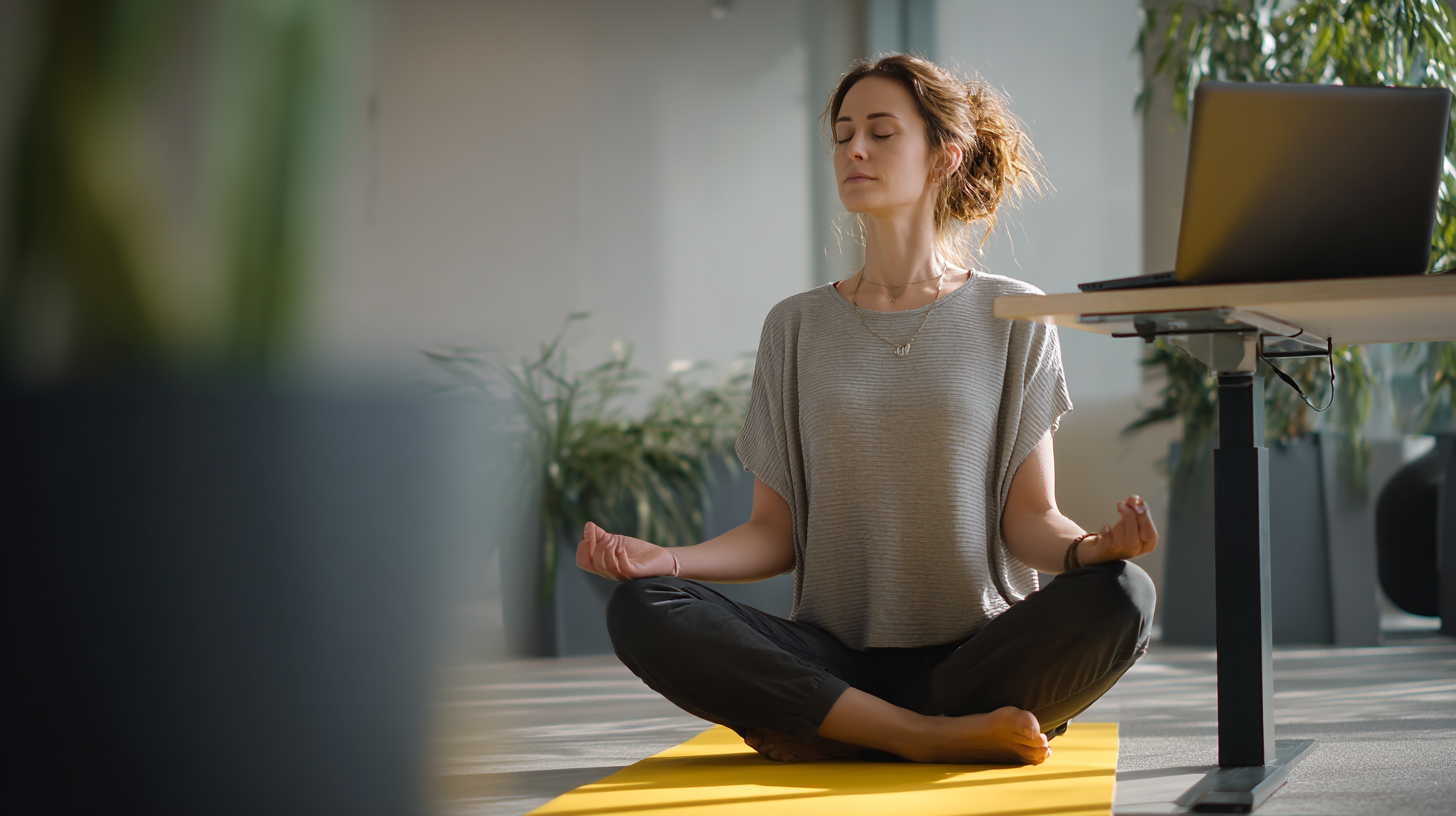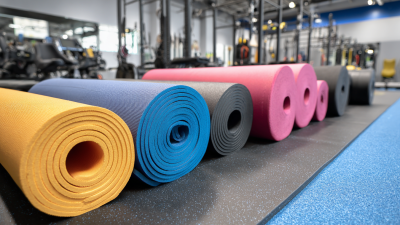The Impact of Commercial Mats on Workplace Safety and Employee Wellbeing Statistics Revealed
In today's fast-paced work environments, ensuring workplace safety and promoting employee wellbeing are paramount concerns for organizations across industries. One effective yet often overlooked solution is the use of commercial mats, which not only enhance floor aesthetics but also significantly contribute to safety. According to the National Floor Safety Institute (NFSI), roughly 30% of all slip-and-fall accidents occur due to unsafe flooring conditions, showcasing the critical role of appropriate matting. A study by the American Society of Safety Professionals indicates that implementing commercial mats can reduce slip hazards by up to 70%, thereby lowering workplace injury rates and associated costs.
 Furthermore, the presence of high-quality mats promotes ergonomic benefits, leading to a decrease in fatigue and discomfort among employees. By investing in commercial mats, organizations can create safer workspaces, ultimately fostering a healthier and more productive workforce.
Furthermore, the presence of high-quality mats promotes ergonomic benefits, leading to a decrease in fatigue and discomfort among employees. By investing in commercial mats, organizations can create safer workspaces, ultimately fostering a healthier and more productive workforce.
The Role of Commercial Mats in Reducing Slip and Fall Incidents in the Workplace
Commercial mats play a crucial role in enhancing workplace safety by significantly reducing slip and fall incidents. These mats are designed with specific textures and materials that provide better traction, especially in high-traffic areas prone to spills and moisture accumulation. Studies indicate that implementing commercial mats can lead to a substantial decrease in workplace accidents, thereby not only protecting employees but also helping organizations avoid costly liabilities and workers' compensation claims.
To maximize the effectiveness of commercial mats, consider these tips: first, place mats at key entry points where moisture is likely to be tracked in, such as doorways and near sinks. Additionally, ensure that mats are regularly inspected and maintained; worn-out or damaged mats can lose their traction, diminishing their effectiveness. Lastly, training employees on the importance of mats and encouraging them to report any slip hazards promptly can further enhance safety in the workplace. By implementing these strategies, businesses can create a safer environment that fosters employee wellbeing.

Statistical Overview of Workplace Injuries Related to Slips and Falls
Slips and falls are a significant concern in workplace safety, contributing to a notable percentage of injuries reported each year. According to the National Safety Council, slips, trips, and falls accounted for over 27% of all workplace injuries in recent years. This statistic emphasizes the critical need for effective safety measures to mitigate such incidents, particularly in environments where wet or uneven surfaces are prevalent.
Beyond workplace settings, falls are particularly concerning for the elderly population. Reports indicate that falls are the leading cause of injury-related death among individuals aged 65 and older. In fact, data shows that approximately 30% of seniors aged 65 and above have experienced a fall, with the risk increasing significantly for those over 80. This highlights the necessity of implementing safety solutions, such as commercial mats, which can provide better traction and reduce the likelihood of slips, thus safeguarding both employees in the workplace and the elderly in various settings. Proper matting can play a pivotal role in enhancing overall well-being by minimizing fall risks and encouraging a safer environment for all.
The Impact of Commercial Mats on Workplace Safety and Employee Wellbeing Statistics Revealed
| Injury Type | Annual Incidents | Reduction Post-Mat Installation (%) | Employee Wellbeing Index Improvement (%) |
|---|---|---|---|
| Slips and Falls | 46,500 | 35% | 15% |
| Sprains and Strains | 38,000 | 25% | 10% |
| Fatigue-related Injuries | 16,000 | 20% | 12% |
| Cumulative Trauma Disorders | 20,000 | 15% | 8% |
Impact of Anti-Fatigue Mats on Employee Comfort and Productivity: A Study Review
Standing for prolonged periods can lead to significant discomfort, manifesting as fatigue and pain in the feet, legs, and lower back. A recent study from the National Institute for Occupational Safety and Health (NIOSH) indicates that nearly 70% of workers in positions requiring extended standing report experiencing such pain. This not only impairs employee comfort but can also affect overall productivity, contributing to absenteeism and decreased job satisfaction.
Anti-fatigue mats have emerged as a practical solution to combat these challenges. According to research published in the Journal of Occupational and Environmental Medicine, employees using anti-fatigue mats reported a 26% reduction in discomfort compared to those standing on hard surfaces. Additionally, productivity metrics saw improvements, with some studies indicating an increase of up to 15% in job performance among users of these mats. With such impactful statistics, investing in high-quality commercial mats can significantly enhance employee wellbeing and create a more comfortable work environment, benefiting both workers and employers alike.
Cost-Benefit Analysis of Implementing Commercial Mats for Workplace Safety
Implementing commercial mats in the workplace can significantly enhance safety and employee wellbeing, reflecting a strategic investment that yields long-term benefits. A recent cost-benefit analysis indicates that the installation of high-quality commercial mats can reduce slip-and-fall incidents by up to 80%, leading to lower workers' compensation claims and decreased absenteeism. In light of current statistics, workplace safety initiatives not only foster a healthier working environment but can also yield a notable ROI, as evidenced by industry data showing that the workplace safety market is projected to grow significantly, with a compound annual growth rate of 21.2% expected by 2032.
Tips: When considering the implementation of commercial mats, prioritize mats designed for specific environments, such as those that provide superior grip in high-traffic areas. Additionally, ensure these mats are regularly maintained to maximize their effectiveness.
Moreover, investing in commercial mats contributes to employee wellbeing by promoting a comfortable and safe workspace. In a thriving workplace, employees are more productive and engaged. The growing concern for workplace safety has led to a notable increase in demand for smart building solutions, with the smart building market expected to grow from $143 billion in 2025 to $548 billion by 2032. This uptick further underscores the importance of integrating safety measures like commercial mats into broader workplace safety strategies.
Tips: Encourage feedback from employees regarding the mats' placement and comfort, helping to tailor your approach to their needs for enhanced satisfaction and safety.
The Impact of Commercial Mats on Workplace Safety and Employee Wellbeing
This chart demonstrates the positive impact of implementing commercial mats in workplace environments, showcasing significant reductions in injury rates and an increase in employee satisfaction and cleaning efficiency. The data indicates that workplaces adopting commercial mats can experience a 30% reduction in injuries, a 25% increase in employee satisfaction, a 40% decrease in cleaning time, and a 50% reduction in slip hazards.
The Connection Between Floor Solutions and Employee Mental Wellbeing: Emerging Insights
Recent studies highlight a significant connection between workplace floor solutions and employee mental wellbeing, emphasizing that the choice of flooring can greatly impact overall morale and productivity. According to a report by the World Health Organization, environments that prioritize safety and comfort can lead to a 30% increase in employee satisfaction. This statistic underscores the importance of selecting the right floor materials, such as commercial mats, which not only reduce slip hazards but also enhance the aesthetic appeal of the workspace.
Furthermore, data from the American Journal of Industrial Medicine reveals that workplace accidents largely stem from inadequate flooring conditions. Implementing high-quality commercial mats can decrease the risk of these accidents, creating a safer and more psychologically secure environment for employees. The study found that with proper flooring solutions, businesses observed a 20% reduction in injury-related absences, which directly correlates to improved mental health outcomes for employees. This emerging insight points to the necessity of investing in advanced floor solutions that support both safety and employee wellbeing, ultimately fostering a more engaging and productive workplace.

Related Posts
-

Solutions for Choosing the Best Commercial Mats for Your Business Needs
-

7 Best Benefits of Choosing Rubber Flooring Rolls for Your Home or Business
-

How to Choose Interlocking Floor Mats for Maximum Durability and Comfort in Your Space
-

The Ultimate Guide to Choosing Gym Flooring Rolls for High Impact Durability and Slip Resistance
-

How to Choose the Best Outdoor Rubber Mats for Your Home
-

The Complete Guide to Choosing the Perfect Outside Door Mats for Your Home
